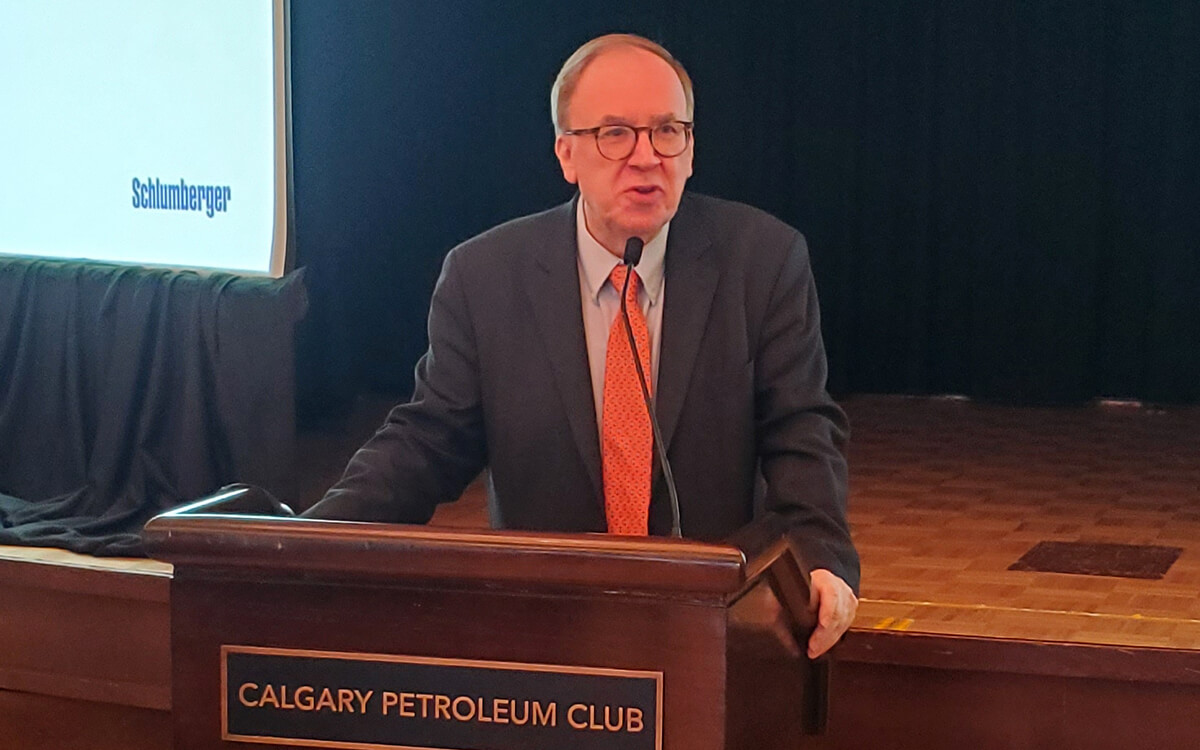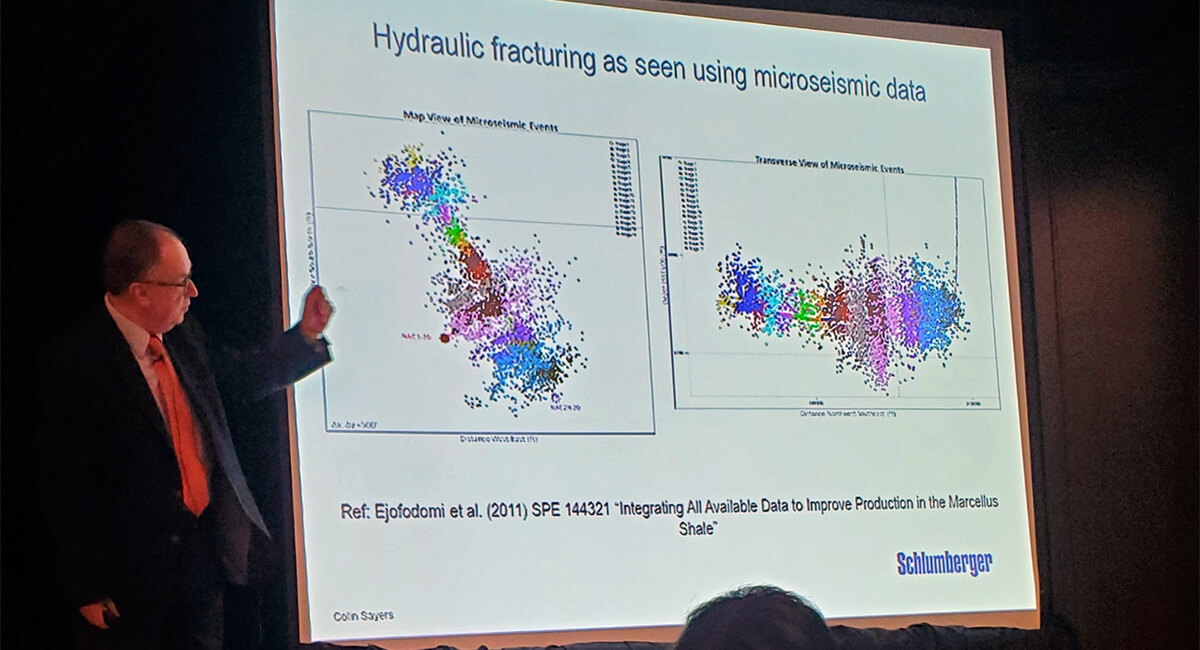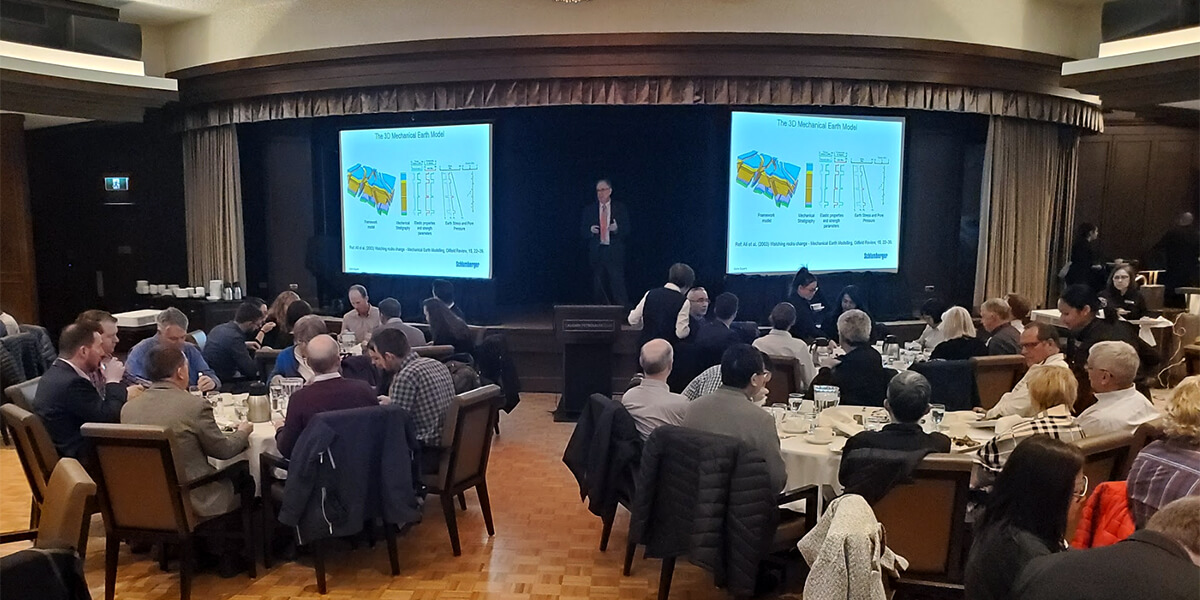
Colin, let us begin by asking you about your educational qualifications and your work experience.
I was born in the North West of England, and have a B.A. in Physics from Lancaster University, U.K., and a D.I.C. (Diploma of Imperial College) in Mathematical Physics and Ph.D. in Physics from Imperial College, London, U.K. The title of my Ph.D. thesis was “Correlation effects in the transition metals and the screening of non-transition element impurities in iron and nickel”. Following a two-year post-doctorate fellowship at Imperial College, I joined the Materials Physics Division of the Atomic Energy Research Establishment, Harwell, U.K., where I first began to work on elastic wave propagation in complex media. Following that I joined Shell's Exploration and Production Laboratory in Rijswijk, The Netherlands, where I was a member of the Geomechanics group of the General Research Department. There I used ultrasonic waves and acoustic emission to characterize the anisotropic damage that develops in rocks due to applied stresses, and used theoretical and computational methods to understand the results. I then moved to Schlumberger’s Research Laboratory in Cambridge, U.K. where I was a member of the seismic department. I then moved to Houston, where I am now a Scientific Advisor in the Schlumberger Seismic for Unconventionals Group.
After receiving your training as a physicist, you decided to join the oil and gas industry in 1986? Why??
At Harwell, one of the things I worked on was the use of ultrasonic waves to characterize texture and residual stress in metals and to detect defects such as cracks and laminations in pipelines, pressure vessels, etc. As part of this work I had the opportunity to attend conferences and workshops on elastic waves and their applications. In these meetings I met attendees from the oil industry and learnt of work on characterizing rocks using ultrasonics in the laboratory and sonic and seismic measurements in the field. Although I knew nothing about rocks when I started attending these meetings, I became fascinated by the complexity of sedimentary rocks and phenomena such as poroelasticity of which I had been unaware. When I got the opportunity to join the oil industry I jumped at the chance.
What differences did you perceive on moving from Shell in Rijswijk to Schlumberger, first in Cambridge, and then in Houston?
I have had the privilege to work for two great companies, Shell and Schlumberger, within which there is a strong recognition that a solid understanding of the geosciences is a key to success. Shell brought me to The Netherlands, where my two daughters were born, and gave me the opportunity to live in the beautiful city of Leiden, close to the Kamerlingh Onnes Laboratory where superconductivity was discovered. Shell sent me on my first geological field trip, in the south of France, and introduced me to the subject of geomechanics. In Schlumberger, I have had the opportunity to work on problems ranging from the propagation of ultrasound in setting cement to the characterization of fractures and stress using prestack seismic inversion. Schlumberger brought me to the USA, where my family and I now reside.
Your technical interests span a wide range from exploration seismology, seismic reservoir characterization, rock physics, reservoir geomechanics, unconventional and fractured reservoirs, seismic anisotropy, borehole/seismic integration, stress-dependent acoustics, and advanced sonic logging. This is quite unusual, nevertheless very creditable. How did you manage to develop this?
I think this is the result of being interested in the work of others, listening to their problems, and trying to help where possible. It is a byproduct of having the good fortune to be able to work in a challenging multidisciplinary environment with talented colleagues, such as exists in both Shell and Schlumberger. The training I have had in physics and mathematics gives me the knowledge necessary to make an impact on interesting and important problems that arise.
As I mentioned, you have technical interests in various areas of geophysics but are known more for your interest in rock physics. Why is that and what are your contributions in it?
Being trained as a physicist, rock physics had a natural attraction for me. Two books had a big influence on me. The first was “Log Interpretation Principles / Applications” published in 1989 by Schlumberger. I was given a copy of this when I attended my first course on Petrophysics in Shell and was absolutely fascinated by the chapter on “Mechanical Properties of Rocks”. The second is “The Rock Physics Handbook” by Mavko et al., published by Cambridge University Press in 1998. My favorite chapter of that book is the one on “Empirical Relations”. The relationships presented in that chapter represent the fruit of millions of dollars of investment in well logging and laboratory measurements, and I continually turn to that chapter for inspiration. My contributions to rock physics include work on the propagation of elastic waves through damaged and fractured rocks, anisotropy of shales and the characterization of pore pressure and in-situ stress using borehole and seismic waves. More recent contributions have centered on the rock physics of unconventional reservoirs.
Such things do not come easy and one must go through the grind. What did it take you to get over the challenges that you may have faced?
For me, the key is being able to work on interesting and important problems in a challenging multidisciplinary environment with talented colleagues. My education in physics and mathematics gives me the flexibility to be able to work on new problems as they arise. As the physicist Richard P. Feynman once said “the same equations have the same solutions” no matter in which area they arise.
Looking back at your career so far, how do you feel? Is it a feeling of satisfaction or something else? Why?
I feel privileged to have been given the freedom to work on interesting and important problems in a challenging multidisciplinary environment with talented colleagues. This has given me great satisfaction.
Please share with us about two of your most exciting experiences in your career.
I was excited to win “The Conrad Schlumberger Award for Outstanding Paper for Technical Depth” at the Schlumberger Reservoir Symposium in two consecutive years, and to be asked to present the 2010 SEG/EAGE Distinguished Instructor Short Course (DISC) on “Geophysics Under Stress: Geomechanical Applications of Seismic and Borehole Acoustic Waves” in 2010. This course brought me to 28 locations in 23 different countries and was thoroughly enjoyable.

What do you think is your most important contribution that you think people will remember Colin Sayers for?
In the geosciences, the contributions that seem to have had the greatest impact are my work on seismic characterization of fractured rocks, the elastic properties of shales and unconventional reservoirs, and seismic pore pressure and in-situ stress determination.
After having achieved so much, what motivates you now?
I remain fascinated by the complexity of sedimentary rocks and am continually motivated to understand their rock physics, geophysics and geomechanics.
Colin, what is the most important thing you learned during your educational years, which you think influenced you in your professional life later?
Most important to me was to obtain a good understanding of physics and mathematics and to learn how to use this understanding to solve practical problems.
Determination of pore-pressure in subsurface shale formations can lead to drilling challenges. While this has been done for conventional reservoirs for quite some time, tell us how the procedures differ when it comes to doing the same for shale resource plays and if we are able to do an effective job?
Conventional seismic pore pressure prediction is well known and uses good quality seismic velocities from seismic tomography. This is successful in areas such as the Gulf of Mexico, where young Tertiary shales comprise much of the depth range of interest. The velocity in such shales is sensitive to pore pressure. However, in shale resource plays, changes in lithology often occur over vertical depths that cannot be resolved using seismic velocities obtained from kinematic inversion because these velocities have poor vertical resolution. By comparison, inversion of prestack seismic reflection amplitudes yields higher vertical resolution. In addition to greater vertical resolution, P-impedance from prestack inversion exhibits greater sensitivity to pore pressure than P-velocity because the product of density and velocity is more sensitive than either quantity alone. Also, variations in P-impedance are not caused solely by variations in pore pressure, but also by changes in rock lithology (composition and mineralogy), so we use, in addition, estimates of VP/VS from AVO inversion to help reduce the impact of variations in lithology. I have most experience using this approach in the Permian Basin, where it seems to work well.
Can we really estimate formation stress from seismic data? What are the challenges involved in doing so?
Yes, we can estimate formation stress from seismic data. The best approach is to build a 3D Mechanical Earth Model (MEM), which consists of a structural framework with geological surfaces and faults from seismic interpretation, mechanical stratigraphy, elastic properties and rock strength parameters, together with estimates of pore pressure, vertical stress, minimum and maximum horizontal stress, and stress orientation. The mechanical stratigraphy is determined from P-impedance and VP/VS from prestack inversion, and dynamic-to-static transforms are used to predict static elastic properties and rock strength parameters based on calibration to stress/strain and ultrasonic measurements on samples cut from cores. Pore pressure is obtained as described above. Vertical stress is calculated from density obtained using a transform from P-impedance to density calibrated to log data. Minimum and maximum horizontal stress are estimated first at the locations of wells with density, compressional and shear sonic and information on stress from leak-off tests, fracture closure pressures, borehole breakouts and other information. Displacement boundary conditions are then applied using the Finite Element Method so that the predicted stress agrees with the stress derived at the location of the calibration wells. Once agreement is obtained at the calibration wells it is assumed that the model is predictive elsewhere. Challenges include having sufficient well calibration data and making sure that prestack inversion gives good estimates of P-impedance and VP/VS throughout the model.

Your current use of azimuthal AVO seems to focus on its use as input for constructing models such as discrete fracture networks. What would you say are the greatest challenges to calculating horizontal stresses directly from AVAz?
Elastic waves in rocks are only sensitive to stress if there are deformable regions within the rock such as grain boundaries, microcracks and fractures. The compliance of such deformable features is a function of the stress acting on them. If such regions are arranged anisotropically, such as occurs in the presence of one or more partially aligned sets of natural fractures, AVAz will be a function of both the orientation distribution of the fractures and the in-situ stress anisotropy. The best way of separating these effects is to build a 3D MEM, as described above, to determine the in-situ stress and stress anisotropy, and then to build a DFN (Discrete Fracture Network) from AVAz using a method that takes into account both the stress sensitivity of the fractures and the possibility that there may be more than one set of fractures. Prior information on the number and approximate orientation of the fractures from borehole image logs is invaluable for this. Horizontal stress anisotropy can be estimated from AVAz using anisotropic poroelasticity but requires prior estimates of the minimum and maximum horizontal tectonic strains as can be obtained by calibrating a 3D MEM as described above.
What well-logs or other non-seismic information do you think operators should routinely provide to help us as geophysicists in calculating stress from seismic?
Essential are sonic, density and petrophysical logs as well as calibration information such as estimates of pore pressure and in-situ stress at calibration wells from direct formation pressure measurements, mud weights, leak-off tests, instantaneous shut-in pressure (ISIP) and fracture closure stress from diagnostic fracture initiation tests (DFITs), borehole breakouts, drilling-induced fractures, and static (stress/strain) and dynamic (ultrasonic velocity) measurements on cores.

On the lighter side, we all improve our knowledge, conviction and confidence with experience. You have your own fingerprint in the geophysical world which is indelibly unique. You achieved this just because of experience, or something else?
I think this is the result of being interested in the work of others, listening to their problems, and trying to help where possible. It is a byproduct of having the good fortune to work in a challenging multidisciplinary environment with talented colleagues.
What other interests do you have?
I enjoy spending time with my family and watching my children make their own way in the world. I also enjoy film, theatre and read widely. I like to try to keep up with progress in other disciplines in the physical sciences such as glaciology, particle physics and cosmology.
What would be your message for young geoscientists entering our profession?
My advice would be to read widely, immerse yourself in a multidisciplinary environment, and listen carefully to colleagues in your own and related disciplines. Scan journals in related subjects and try to attend conferences and workshops of an international standard. For those in academia, try to spend at least some time in industry to get a feel for the priorities and type of work being done there. For me, the best thing about working in industry has been the opportunity to work on many different topics. Expertise in physics is widely transferable, and experience gained in solving one problem helps to solve others.











Share This Interview